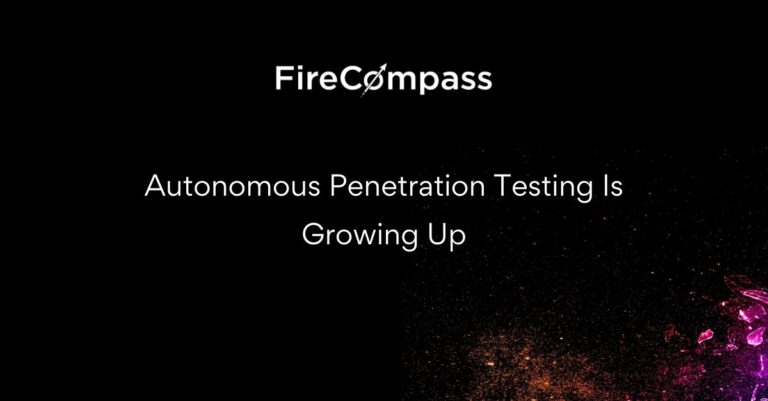Race conditions, a critical vulnerability, arise when multiple processes or threads execute concurrently within a software system. This blog aims to provide a comprehensive understanding of race conditions and effective prevention strategies, accompanied by practical examples.
Misconception – Is it commonly believed that Race Condition Bugs primarily result in Denial of Service (DoS)? Contrary to this, race condition bugs can be exploited for executing arbitrary code, compromising cryptography, bypassing authentication, and more. Here is a list of several CVEs (Common Vulnerabilities and Exposures) that highlight race condition issues.
Notable Instances of Race Condition Vulnerabilities:

CVE-2023-24042
Impact: Critical Data Exposure. A race condition in LightFTP through 2.2 allows an attacker to achieve path traversal via a malformed FTP request.
CVE-2022-4037
Impact: Account Takeover. An issue has been discovered in GitLab CE/EE affecting all versions before 15.5.7, all versions starting from 15.6 before 15.6.4, all versions starting from 15.7 before 15.7.2. A race condition can lead to verified email forgery and takeover of third-party accounts when using GitLab as an OAuth provider.
CVE-2021-36532
Impact: Remote Code Execution. Race condition vulnerability discovered in portfolioCMS 1.0 allows remote attackers to run arbitrary code via fileExt parameter to localhost/admin/uploads.php.
CVE-2020-1667
Impact: Bypass Security Defenses. When DNS filtering is enabled on Juniper Networks Junos MX Series with one of the following cards MS-PIC, MS-MIC or MS-MPC, an incoming stream of packets processed by the Multi-services PIC Management Daemon (mspmand) process might be bypassed due to a race condition. This issue affects Juniper Networks Junos OS: 17.3 versions prior to 17.3R3-S8; 18.3 versions prior to 18.3R3-S1; 18.4 versions prior to 18.4R3; 19.1 versions prior to 19.1R3; 19.2 versions prior to 19.2R2; 19.3 versions prior to 19.3R3. This issue does not affect Juniper Networks Junos OS 17.4, 18.1, and 18.2.
CVE-2022-24800
Impact: Remote Code Execution. October/System is the system module for October CMS, a self-hosted CMS platform based on the Laravel PHP Framework. Prior to versions 1.0.476, 1.1.12, and 2.2.15, when the developer allows the user to specify their own filename in the `fromData` method, an unauthenticated user can perform remote code execution (RCE) by exploiting a race condition in the temporary storage directory. This vulnerability affects plugins that expose the `OctoberRainDatabaseAttachFile::fromData` as a public interface and does not affect vanilla installations of October CMS since this method is not exposed or used by the system internally or externally.
CVE-2021-24377
Impact: Remote Code Execution. The Auto optimize WordPress plugin before 2.7.8 attempts to remove potential malicious files from the extracted archive uploaded via the ‘Import Settings’ feature, however this is not sufficient to protect against RCE as a race condition can be achieved in between the moment the file is extracted on the disk but not yet removed. It is a bypass of CVE-2020-24948.
-> Hackers Won't Wait For Your Next Pen Test: Know Automated Continuous Pen Test
What Is Race Condition
Imagine a scenario in a bank where customers frequently transfer money between their accounts. The system keeps track of account balances which can be accessed and modified by multiple users simultaneously.
In this context, a race condition occurs when two or more users attempt to transfer funds from one account to another at the same time. For instance, User A wants to move money from Account X to Account Y, and concurrently, User B also initiates a transfer from Account X to Account Y.
Generally, a Race Condition Bug Has Following Key Prerequisites:
- Critical Section: This is the crucial part of the system where shared resources, such as account balances, are accessed and modified. Multiple users can interact with these resources simultaneously.
- Synchronization: The issue arises due to a lack of proper synchronization, which would usually prevent multiple processes from accessing the critical section at the same time. In this case, the system doesn’t manage these simultaneous transactions effectively.
- Unpredictable Outcome: As User A and User B both attempt transfers from the same source account to the same destination account at the same time, the system fails to properly manage the transactions. This leads to an unpredictable state of the shared resource. Both transactions might proceed simultaneously, resulting in an erroneous perception that there is more money available in the account than there actually is. This misunderstanding could potentially lead to an overdraft situation.
This scenario illustrates how a race condition can lead to an unexpected and incorrect outcome due to the simultaneous, uncoordinated execution of multiple transactions.
Types of Race Conditions :
- Time-of-Check to Time-of-Use (TOCTOU) Flaw:
This type involves a change in the system state between the moment a condition is checked and the moment it’s utilized.Example: File Access Race Condition
Consider a scenario where a file’s permissions are checked before a user is allowed to access it. An attacker can manipulate this by changing permissions between the check and the file’s actual usage. - Limit Overrun Race Condition:
This type allows the surpassing of set limits by exploiting timing vulnerabilities.Example: Coupon Code Redemption
In an e-commerce platform, a user applies a one-time discount coupon during checkout. By cleverly timing attempts, the user could repeatedly reuse the code within a small window, bypassing the intended single-use restriction. - Ordering Race Condition:
Instances where the execution order of processes significantly impacts the outcome.Example: Multi-threaded Payment System
In a payment processing system, if two transactions attempt to withdraw the same amount from an account simultaneously, the order of execution may lead to an overdraft due to insufficient funds not being checked simultaneously. - Deadlocks and Live locks:
These conditions halt progress or lead to continual resource contention.Example: Database Deadlock
In a database system, two processes attempt to access the same resources but in a different order, leading to a deadlock scenario where both processes are waiting for resources that the other holds, resulting in a system halt. - Priority Inversion:
Lower priority processes preempt higher priority ones due to resource sharing.Example: Real-time Systems
In real-time systems, a high-priority task waiting on a low-priority task to release a shared resource can result in delays, impacting critical operations. - Micro-Architectural Race Conditions:
These are specific to hardware-level operations.Example: Spectre and Meltdown Vulnerabilities
These vulnerabilities exploit CPU performance optimizations, allowing unauthorized access to sensitive data by manipulating timing discrepancies in the processor’s speculative execution.
-> (Request Demo) 10 X Pen Testing Frequency & 100% Asset Coverage
Impact of Race Conditions:
Exploitation of race conditions presents a critical and potentially devastating threat. These vulnerabilities offer malevolent actors pathways to gain unauthorized access, escalate privileges, or even provoke system-wide crashes. Let’s delve into some of the common scenarios where these vulnerabilities are exploited to wreak havoc:
- Privilege Escalation:
By manipulating race conditions, attackers can cleverly maneuver systems to grant themselves elevated privileges. This deceptive action allows them to gain access levels beyond what is intended, thereby enabling a spectrum of malicious activities. - Data Corruption:
Simultaneous writes to shared resources can lead to a dire consequence: data corruption. This occurrence poses a substantial risk, potentially resulting in irreparable harm to crucial information.
- Denial of Service (DoS):
Race conditions, when exploited skillfully, can cause system crashes. This leads to a denial of service for legitimate users, disrupting operations and service availability. - Information Leakage:
With precise timing and strategic exploitation of race conditions, attackers can stealthily extract sensitive information from shared resources before they are modified or encrypted. This clandestine action compromises data security and confidentiality.
-> [Request Demo] - Get the Hacker’s View Of Your Attack Surface
Mitigations
Addressing race conditions effectively involves a comprehensive approach, combining meticulous coding reviews and Pentesting.
- Testing and Code Review: Rigorous testing and peer code reviews play a pivotal role in identifying and rectifying potential vulnerabilities arising from race conditions. Thorough testing procedures, including stress testing and edge case scenarios, coupled with code reviews by experienced peers, offer a robust defense against race condition vulnerabilities.
- Continuous Pentesting: Continuous pentesting is an approach to security testing that involves ongoing, regular assessments of an organization’s systems, applications, and networks to identify and address these vulnerabilities. Unlike traditional penetration testing, which is often conducted periodically, continuous pen testing is an ongoing and iterative process. FireCompass ensures continuous discovery and testing of external attack surfaces instead of the typical pen-test of 10-20% of their attack surface, leaving the peripheral assets untested for extended periods.
>> Discover & Test your Ransomware Attack Surface
Conclusion
Race condition vulnerabilities pose a formidable challenge within the intricate realm of cybersecurity. The imperative for proactive measures becomes evident due to their capacity to wreak havoc on software systems and compromise security. Strengthening systems against these threats requires security experts and engineers to understand the workings of race conditions, their potential for exploitation, and effective strategies for mitigating their impact.
Author: Komma Uma Maheswar reddy
Assisted By: Arnab Chattopadhayay, Jitendra Chauhan
About FireCompass:
FireCompass is a SaaS platform for Continuous Automated Pen Testing, Red Teaming and External Attack Surface Management (EASM). FireCompass continuously indexes and monitors the deep, dark and surface webs using nation-state grade reconnaissance techniques. The platform automatically discovers an organization’s digital attack surface and launches multi-stage safe attacks, mimicking a real attacker, to help identify breach and attack paths that are otherwise missed out by conventional tools.
Important Resources:
Get a free demo to find out how FireCompass can help you to prioritize risks with real-time alerts for faster detection and remediation.











